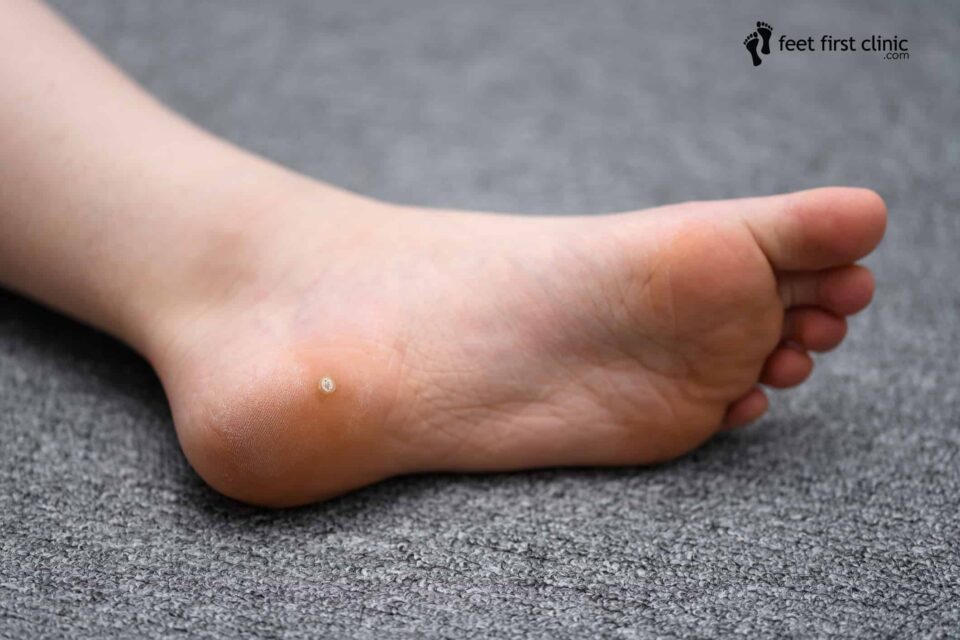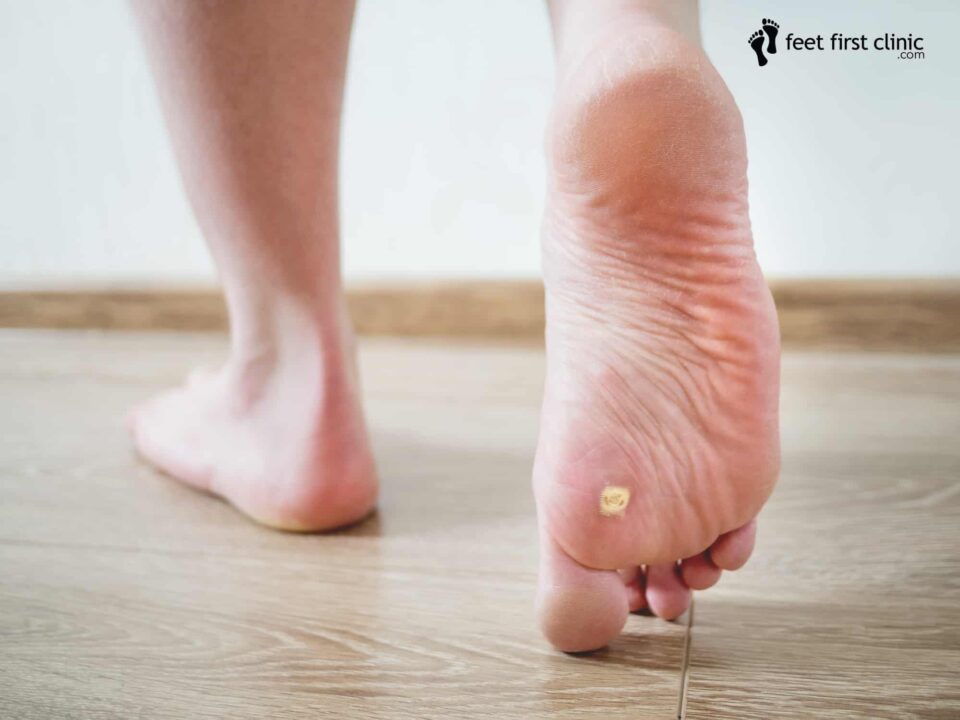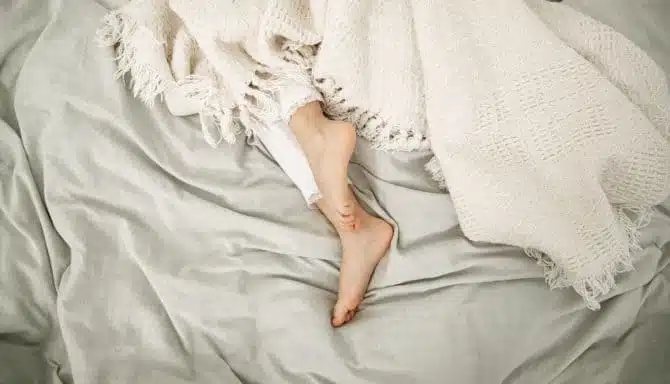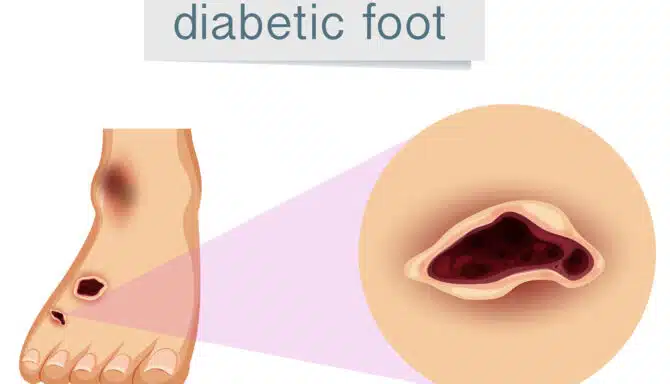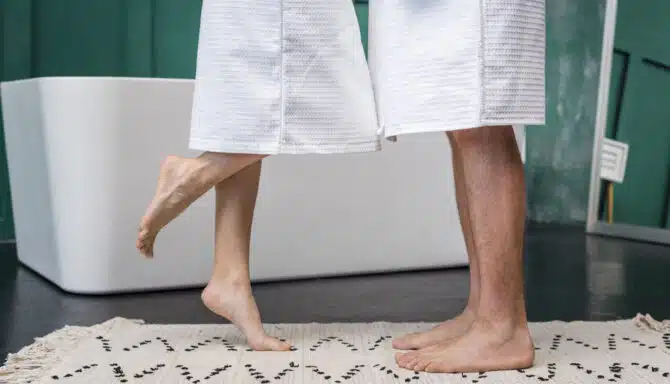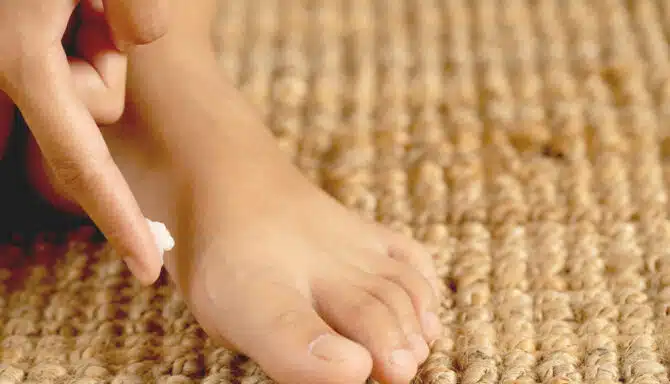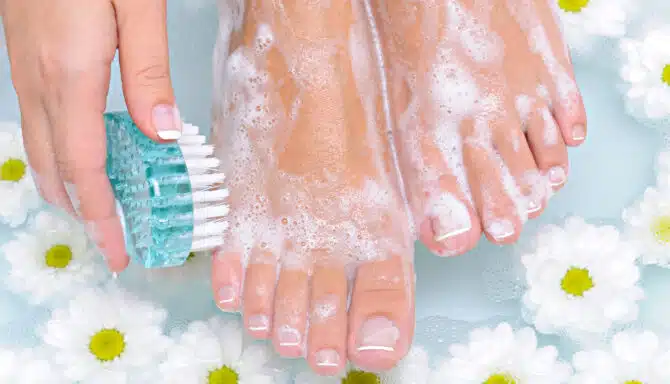Warts can occur anywhere on your body. These small, circular growths are a type of skin infection that stand out because of their roughness, slight discolouration, and sometimes pain. When it comes to your feet, the soles are a common place for warts. This skin condition is known as plantar warts.
Although warts on your feet are a common occurrence, this condition comes with very treatable solutions. From self-care remedies to visiting a foot specialist, the scale of treatment methods varies based on the persistence level of warts. If you’re looking to avoid plantar warts altogether, learn about what causes them, or how to get rid of them, you’ve come to the right place.
In this article, we explore plantar warts, their causes, how to get rid of plantar warts, and finally how to book an appointment with a foot specialist if you have persistent plantar warts.
What are plantar warts?
Plantar warts are common viral skin infections that grow on the bottom of the feet. They are small, flat, and hard circular growths that look like a corn, callus or blister. Walking puts pressure on the wart, which makes it grow inward and builds a hard layer of skin overtop. Applying pressure to plantar warts (walking, standing, or running) may be uncomfortable, if not painful.
Anyone can get plantar warts: they are not a severe health condition and sometimes go away on their own. However, they are contagious. If they persist, they can grow, spread and cause foot pain when you stand or walk on them.
What causes plantar warts?
Human Papilloma Virus (HPV) causes foot warts by infecting the foot’s outer layer of skin. HPVs are a group of more than 200 related viruses. In the case of plantar warts, the strain of HPV causing this foot condition is not severe and varies from the strain that infects the reproductive tract. If you think plantar warts and herpes or genital warts, are related, don’t worry – the HPV strains are different.
Usually, the virus enters the skin through a perforation like a cut or small breaks in the skin. Frequenting high-traffic common areas like showers, change rooms, and pool decks increase your likelihood of contracting the HPV that causes warts because the virus can spread more easily in these areas. Understandably, the wart-causing virus thrives in warm, moist environments. (This can be said for several other foot conditions, actually, including athlete’s foot.) Wearing Crocs or flip-flops will help lessen your chances of catching this virus by ensuring your bare feet do not come in contact with the virus.
Children and teenagers are more likely to get plantar warts because of their hobbies; additionally, those with weakened immune systems are at heightened risk. That said, like many foot conditions, anyone can get plantar warts.
So, what happens when you get plantar warts? Fortunately, there are several treatment options, including DIY methods as well as visiting a foot specialist.
Plantar warts treatments
Sometimes, plantar warts will treat themselves and go away with time. If that’s not the case, a foot specialist like a chiropodist can easily remove plantar warts. There are also different treatments depending on how resistant the wart is to certain methods. For instance, if the wart is not responding to one treatment, a more aggressive treatment may be tried.
Regardless of the treatment method you choose, it’s best to follow these practices:
- Cover the wart to help prevent it from spreading to either other people or another part of your body
- Wash your hands any time you touch the wart, accidentally or intentionally
Below you’ll find a mix of at-home treatment methods and procedures done by a foot specialist at a local clinic:
Cryotherapy
Cryotherapy is a method by which extreme cold is used to freeze and remove a plantar wart. This procedure is quick and easy, and generally low risk. Instead of cryotherapy performed in a cold tank, this kind is slightly different and more concentrated. Cold therapy is performed via liquid nitrogen on a cotton swab. This treatment is performed every two weeks, and often requires several treatments to eradicate the wart.
Salicylic acid
Salicylic acid is a topical medication that is applied to the wart. It softens the skin and helps shed layers of skin (and the wart) bit by bit. It is found in many over-the-counter wart removal products, and a chiropodist can prescribe a high-strength salicylic acid topical solution that you can apply regularly at home. The higher the dose of salicylic acid, the better its treatment.
Laser treatment
Laser treatment involves cauterizing blood vessels. Ouch, that sounds intense. But, your medical practitioner will numb your skin first. To be effective, this treatment can be repeated every 2-4 weeks.
Blister-inducing medicine
A foot specialist can help induce a blister under the wart by applying cantharidin, a type of burn agent. This is applied every 2 to 3 weeks by a chiropodist. The cantharidin forms a blister over the wart and separates the wart from the skin covering it and brings the wart to the surface. The blister then dries over the next few days and the wart falls off. The treatment is repeated until the wart is fully removed.
Needling
Needling is a simple, but more invasive wart removal procedure with roughly 70% effectiveness. After a local anesthetic is administered, a specialist punctures the wart with a sterile needle about 100 times. This method pushes the HPV away from the surface of the skin and internally where an immune reaction is triggered. If successful, your body’s immune system will do the rest.
Excision
Excision is used for plantar warts that resist other treatments. The foot is first numbed with a local anesthetic. Then, as the name implies, the wart is cut away (or “excised”) from the skin. The base is also cauterized to ensure no living viral tissue is left behind. There is a risk of scarring, so this method isn’t used unless other treatments have failed.
Duct tape
Duct tape is a common yet relatively unproven method for treating plantar warts (largely because plantar warts can disappear on their own, which makes it difficult to attribute to the treatment method). This DIY method relies on suffocating the plantar wart and stripping away the outer layer of the skin to help rid the virus.

